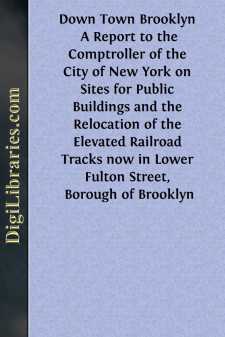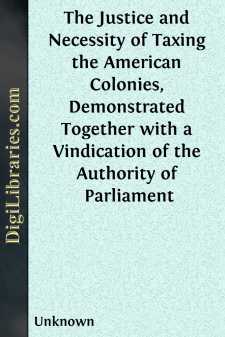Categories
- Antiques & Collectibles 13
- Architecture 36
- Art 48
- Bibles 22
- Biography & Autobiography 813
- Body, Mind & Spirit 142
- Business & Economics 28
- Children's Books 14
- Children's Fiction 11
- Computers 4
- Cooking 94
- Crafts & Hobbies 4
- Drama 346
- Education 46
- Family & Relationships 57
- Fiction 11829
- Games 19
- Gardening 17
- Health & Fitness 34
- History 1377
- House & Home 1
- Humor 147
- Juvenile Fiction 1873
- Juvenile Nonfiction 202
- Language Arts & Disciplines 88
- Law 16
- Literary Collections 686
- Literary Criticism 179
- Mathematics 13
- Medical 41
- Music 40
- Nature 179
- Non-Classifiable 1768
- Performing Arts 7
- Periodicals 1453
- Philosophy 64
- Photography 2
- Poetry 896
- Political Science 203
- Psychology 42
- Reference 154
- Religion 513
- Science 126
- Self-Help 84
- Social Science 81
- Sports & Recreation 34
- Study Aids 3
- Technology & Engineering 59
- Transportation 23
- Travel 463
- True Crime 29
Down Town Brooklyn A Report to the Comptroller of the City of New York on Sites for Public Buildings and the Relocation of the Elevated Railroad Tracks now in Lower Fulton Street, Borough of Brooklyn
by: Unknown
Description:
Excerpt
Since the appointment of this committee on the 30th day of April, 1913, it has had frequent meetings, conferences and hearings. Conferences have been had with representatives from organizations that have given time and study to the subjects within the scope of this committee. Several public hearings were held, notice of which was given in the public press. Written communications have been invited from all persons interested. Architects have been employed to advise and we have had the help of competent engineers.
At the outset the committee has been compelled to recognize the situation of Brooklyn and its relation to Manhattan and Greater New York. Brooklyn has always labored under the disadvantage that, although its residents have helped create the great assessed valuations in lower Manhattan, it did not before consolidation receive any benefit from the taxation of those values. In this respect Brooklyn was not and even now is not like independent cities such as Buffalo, Cleveland or Chicago, where both residences and office buildings contribute alike to support the same municipal government. Prior to consolidation on January 1st, 1898, Brooklyn had reached the limit of her constitutional borrowing capacity. The city needed many new schools and more bridges and tunnels across the East River. Along with many disadvantages that flowed from consolidation, there came the great advantage that Brooklyn at last received a portion of the tax money raised on the real estate in lower Manhattan, to which Brooklyn people had helped to give a high value. It must, however, be recognized that Manhattan is the central borough, and that as the business and municipal center of Greater New York she is entitled to pre-eminence in buildings to transact the city's business. Now that the boroughs constitute one city, Manhattan must help to give the outlying boroughs those utilities that their growth reasonably requires, and the outlying boroughs must recognize Manhattan as the business and official center.
For the last twenty years the industrial population in Brooklyn has been greatly increasing. Officials and loyal citizens who desire that the historic character of Brooklyn should be preserved cannot afford to wait ten years before a beginning is made to brighten up the downtown district. Continued migrations of home owners from Brooklyn to New Jersey and to counties outside of Greater New York may weaken the ability of the borough to preserve its entity and character. If it should once become a somewhat neglected industrial annex of Manhattan, the result would be injurious both to Brooklyn and Manhattan. No greater calamity could happen to every part of Brooklyn than to have the borough lose its civic pride.
When we add to the foregoing considerations the fact that Greater New York has nearly reached the constitutional limit of its borrowing capacity, we should not delude ourselves into thinking that persistent and long-continued demand will bring indefinite millions of dollars to Brooklyn in the near future. The vast contemplated expenditure for rapid transit railroads brings a share to Brooklyn, but even to validate the dual rapid transit contracts it was necessary to dedicate to subways $50,000,000 out of the $65,000,000 of self-supporting dock bonds exempted under the recent constitutional amendment, while we in Brooklyn know that more than $15,000,000 are needed for dock improvements in Brooklyn alone during the next ten years. In order to obtain a sufficient margin within the debt limit, assessed valuations have been placed at full value, and in some cases beyond prices that property will bring in the open market....




![The Golden Mean or Ratio[(1+sqrt(5))/2]](https://digilibraries-com.s3.eu-central-1.amazonaws.com/covers/762d190f-63a4-489a-b897-ff78516bd105.jpg)







